The Iconic Petronas Towers Reflect Malaysia’s Pride and Optimism
The Petronas Towers have become an internationally renowned landmark in Kuala Lumpur, Malaysia. Under the leadership of Prime Minister Mahathir Mohamad, the towers’ design involved Argentinian-American architects César Pelli, along with Deejay Cerico, J.C. Guinto, and Dominic Saibo.
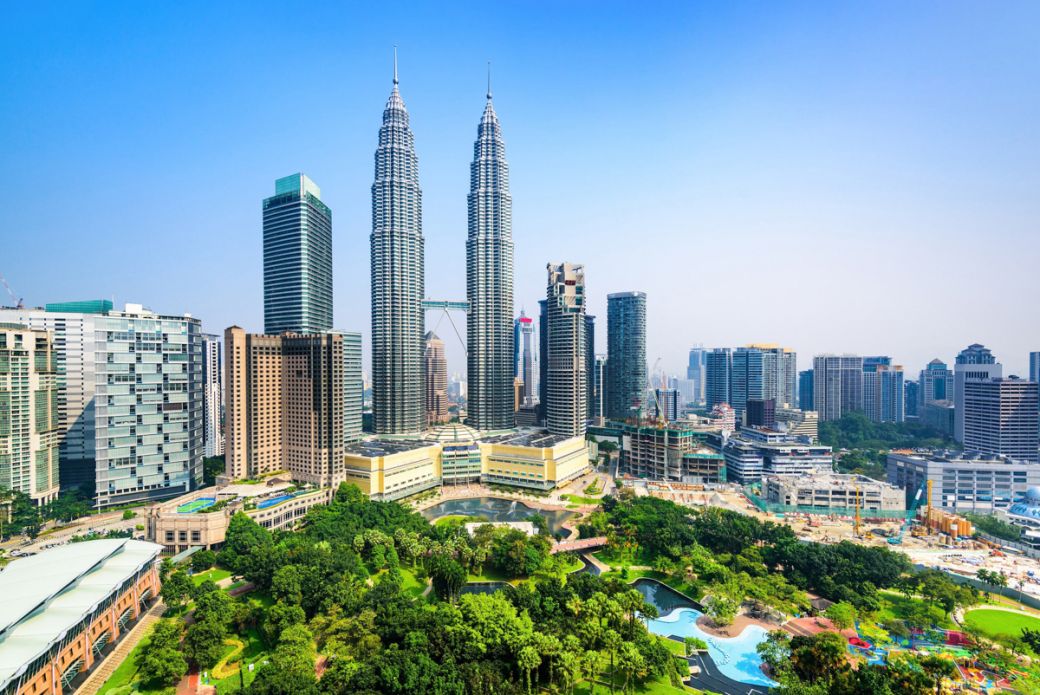 Petronas Towers, a renowned landmark in Kuala Lumpur (cr: Pelli Clarke & Partners)
Petronas Towers, a renowned landmark in Kuala Lumpur (cr: Pelli Clarke & Partners)
The design was carried out with the ambition of breaking the record as the world's tallest building, which was monopolized by the US at that time. As a Southeast Asian country, Malaysia tried to emphasize its international presence by building a spectacular scale home for Petronas, the national oil company. This skyscraper in the city's heart has also succeeded in placing Kuala Lumpur on the international architectural radar.
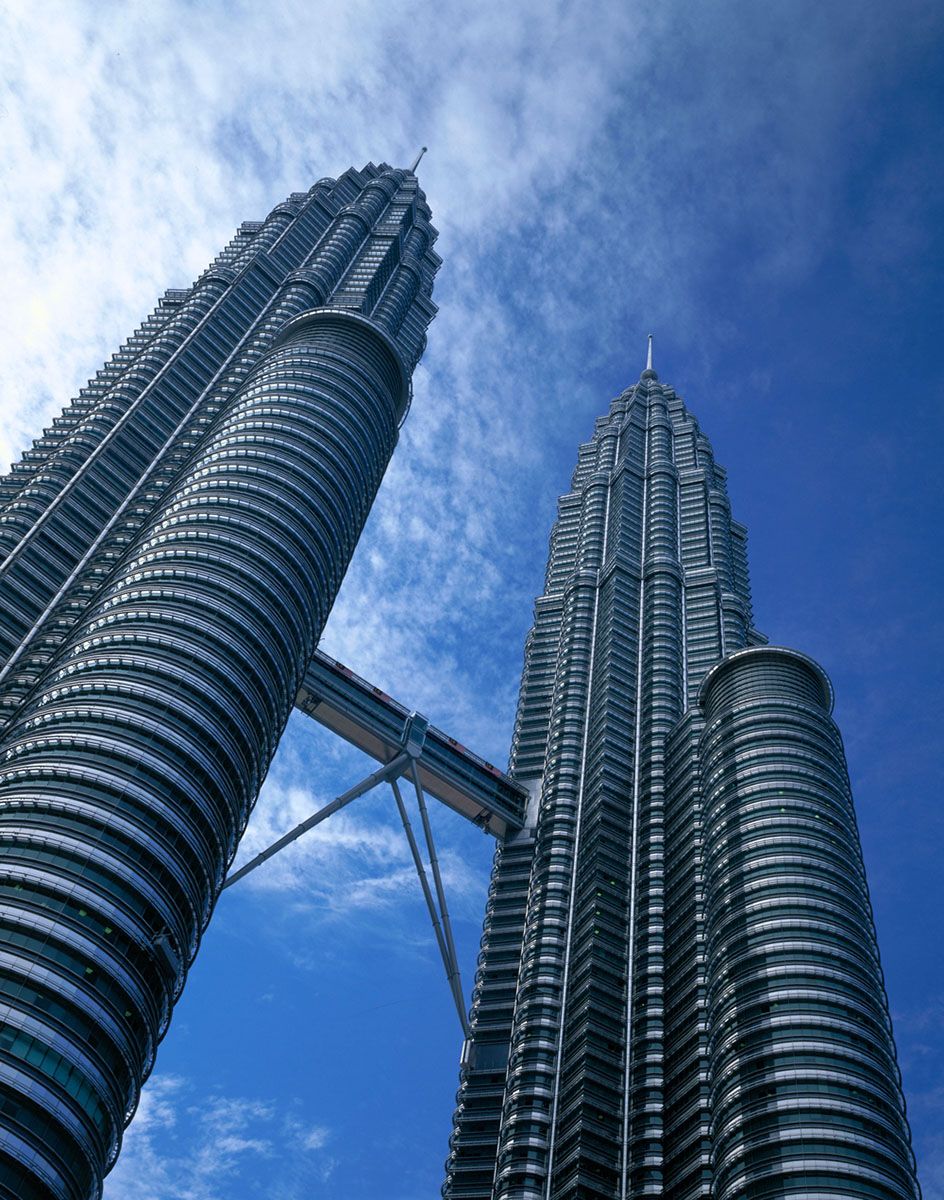 World record-breaking twin towers (cr: Pelli Clarke & Partners)
World record-breaking twin towers (cr: Pelli Clarke & Partners)
Proposed as a new landmark in a country with a strong Islamic culture, the Prime Minister had the idea to adapt the rub el hizb—an octagram shape represented as two overlapping squares—into the building plan. Pelli then refined the input by adding a semi-circular shell to meet the needs and efficiency of the space without destroying the symbolism.
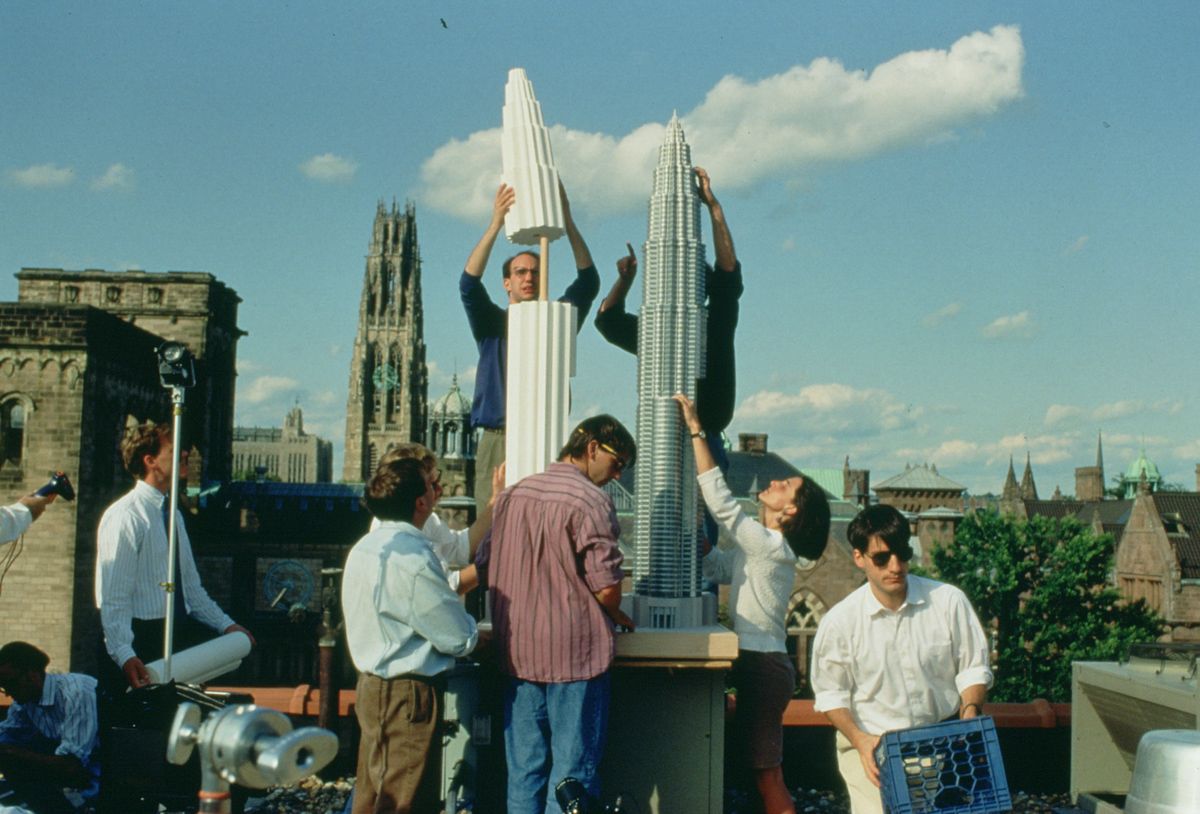 Building model (cr: Pelli Clarke & Partners)
Building model (cr: Pelli Clarke & Partners)
This unusually shaped plan repeats itself until it reaches 88 floors above. At the top of each tower, a pinnacle was installed so that the total height of the building was 452 m, beating Chicago's Sears Tower as the tallest building at that time. Amazingly, not just one, Malaysia succeeded in building two identical towers at once, and they have become the tallest twin towers in the world to date.
 One of the spaces inside the towers (cr: Pelli Clarke & Partners)
One of the spaces inside the towers (cr: Pelli Clarke & Partners)
Behind the greatness of its name, the tortuous construction process was the price that must be paid for the success of the Petronas Towers. The obstacles faced are mainly related to natural conditions, ranging from soil type to high rainfall in this tropical country. The first problem started with the discovery of soft soil at the location. This was a crucial structural issue in the construction process. After long discussions and experiments, the team decided to penetrate deep solid foundations 120 m long into the ground, making it the largest foundation in the world—another record breaker.
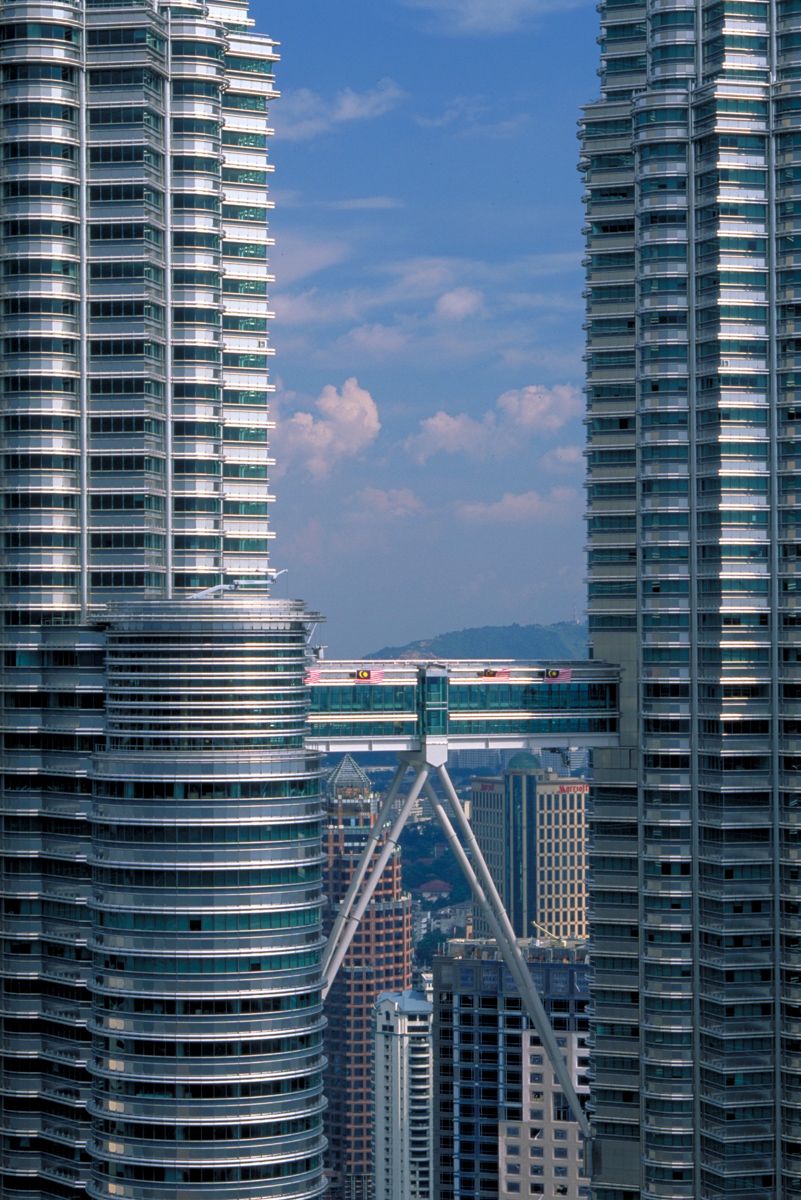 The sky bridge (cr: Pelli Clarke & Partners)
The sky bridge (cr: Pelli Clarke & Partners)
Apart from that, safety issues became another concern, considering that the higher the building, the more complex the evacuation scheme would be. In response, the architect proposed making a sky bridge connecting the two towers so that if one of the buildings is paralyzed, the people inside can still save themselves through the evacuation route in the other tower. This bridge was built in the middle of the construction period, completely assembled first beforehand. It was then being pulled and anchored at a point half the tower. In each building where the bridge structure was installed, a huge berry structure allows the bridge mass to move independently. A system like this can tolerate horizontal movement of both buildings due to wind loads so that they do not become stiff and endanger each other.
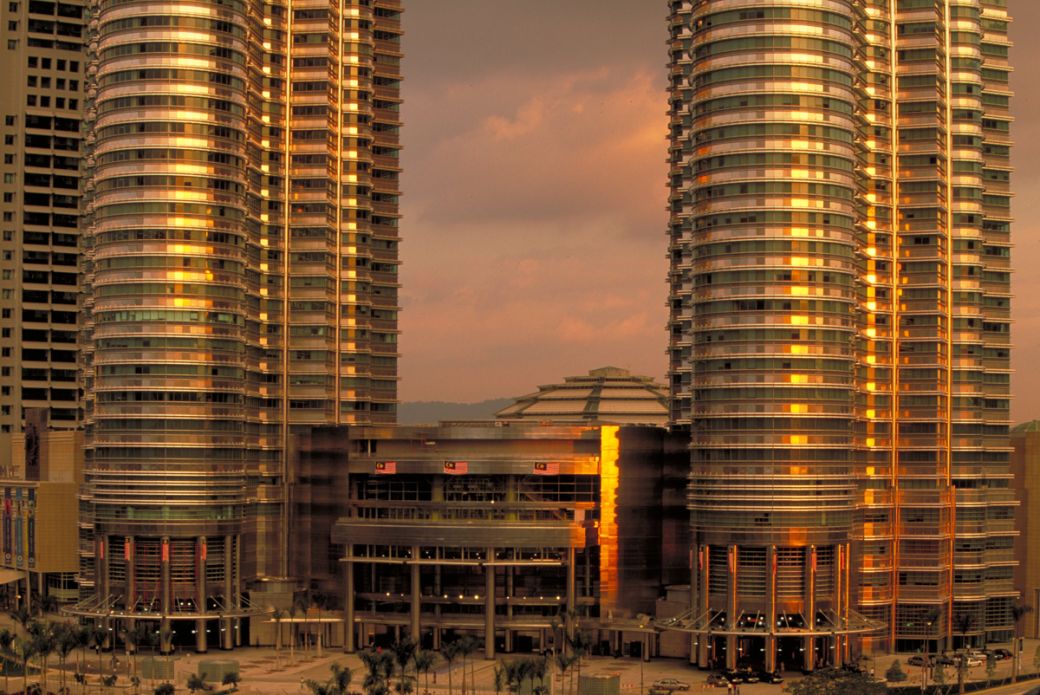 The podium (cr: Pelli Clarke & Partners)
The podium (cr: Pelli Clarke & Partners)
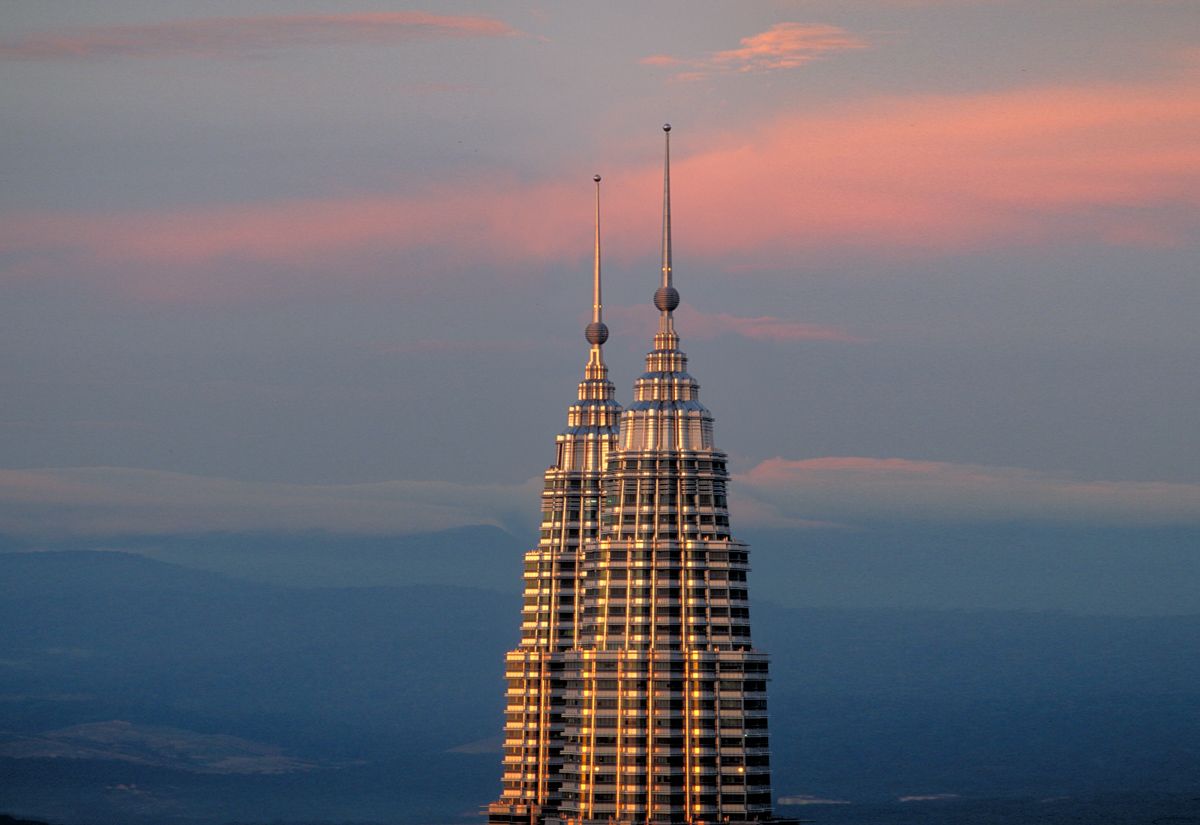 The top of the towers (cr: Pelli Clarke & Partners)
The top of the towers (cr: Pelli Clarke & Partners)
The Petronas Towers were completed in 1996 and are currently the most famous icon in Kuala Lumpur. Through its magnificent architecture, these twin towers reflect Malaysia's pride and optimism as a country that continues to develop to compete globally.









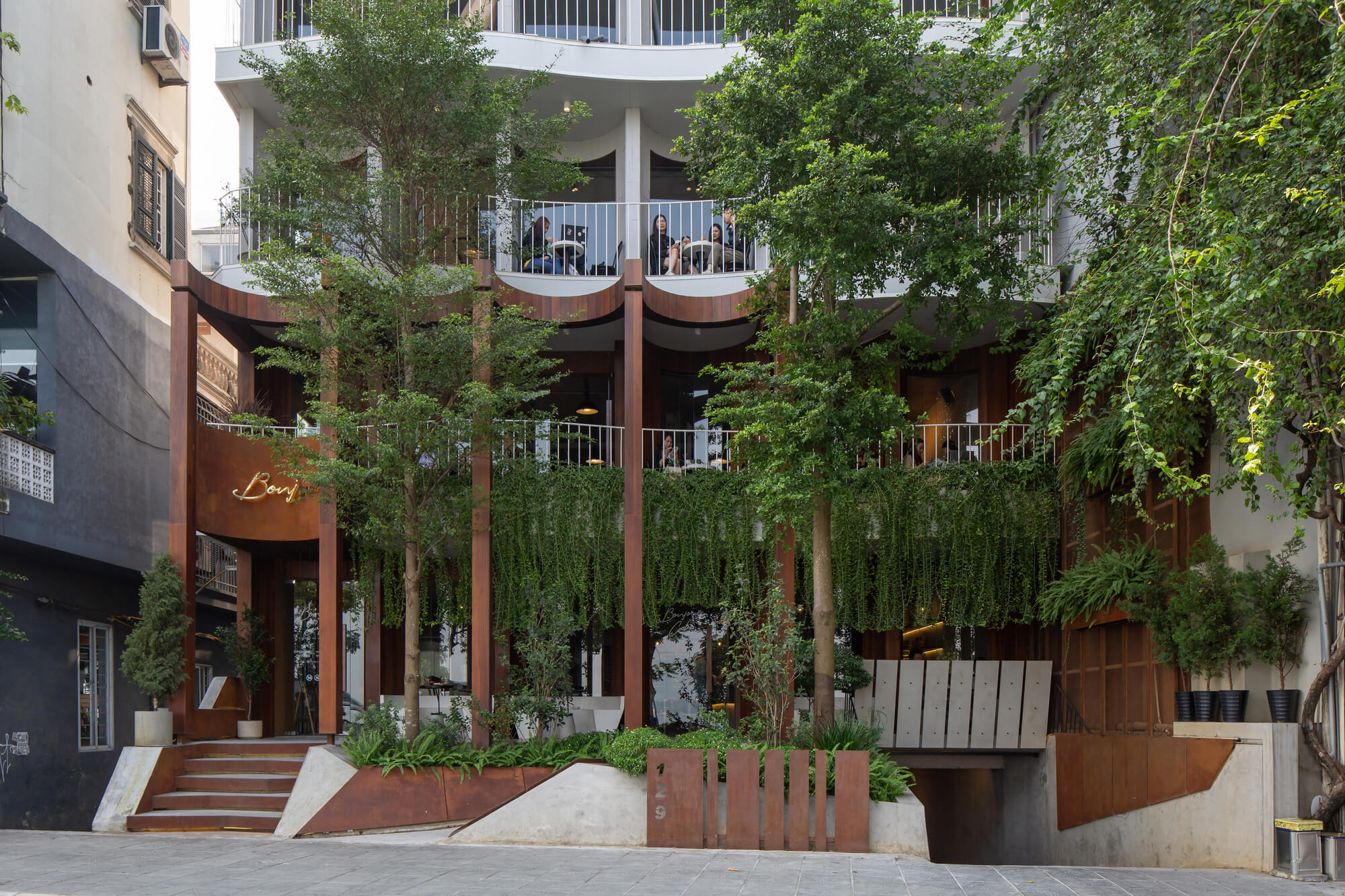
Authentication required
You must log in to post a comment.
Log in